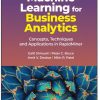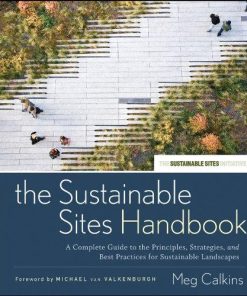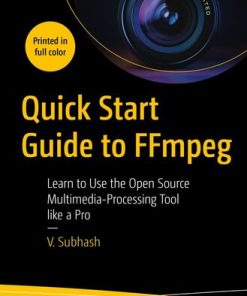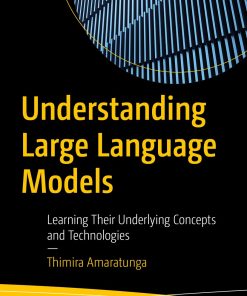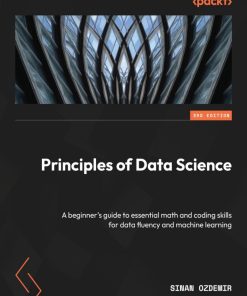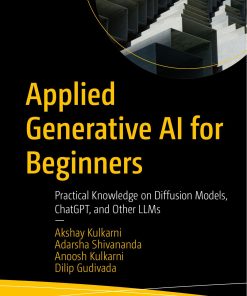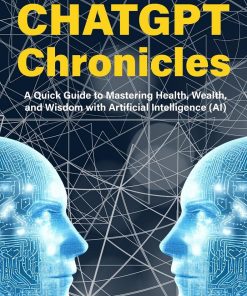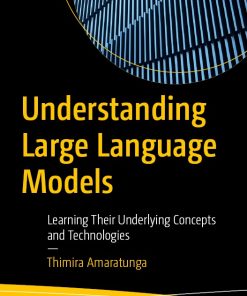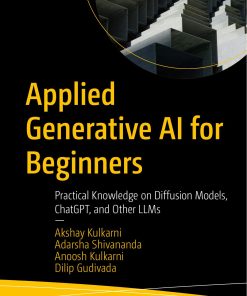Quick Start Guide to Large Language Models Strategies and Best Practices for using ChatGPT and Other LLMs 1st edition by Sinan Ozdemir 0138199302 9780138199302
$50.00 Original price was: $50.00.$25.00Current price is: $25.00.
[EARLY RELEASE] Quick Start Guide to Large Language Models: Strategies and Best Practices for using ChatGPT and Other LLMs 1st edition by Sinan Ozdemir – Ebook PDF Instant Download/DeliveryISBN: 0138199302, 9780138199302
Full download [EARLY RELEASE] Quick Start Guide to Large Language Models: Strategies and Best Practices for using ChatGPT and Other LLMs 1st edition after payment.
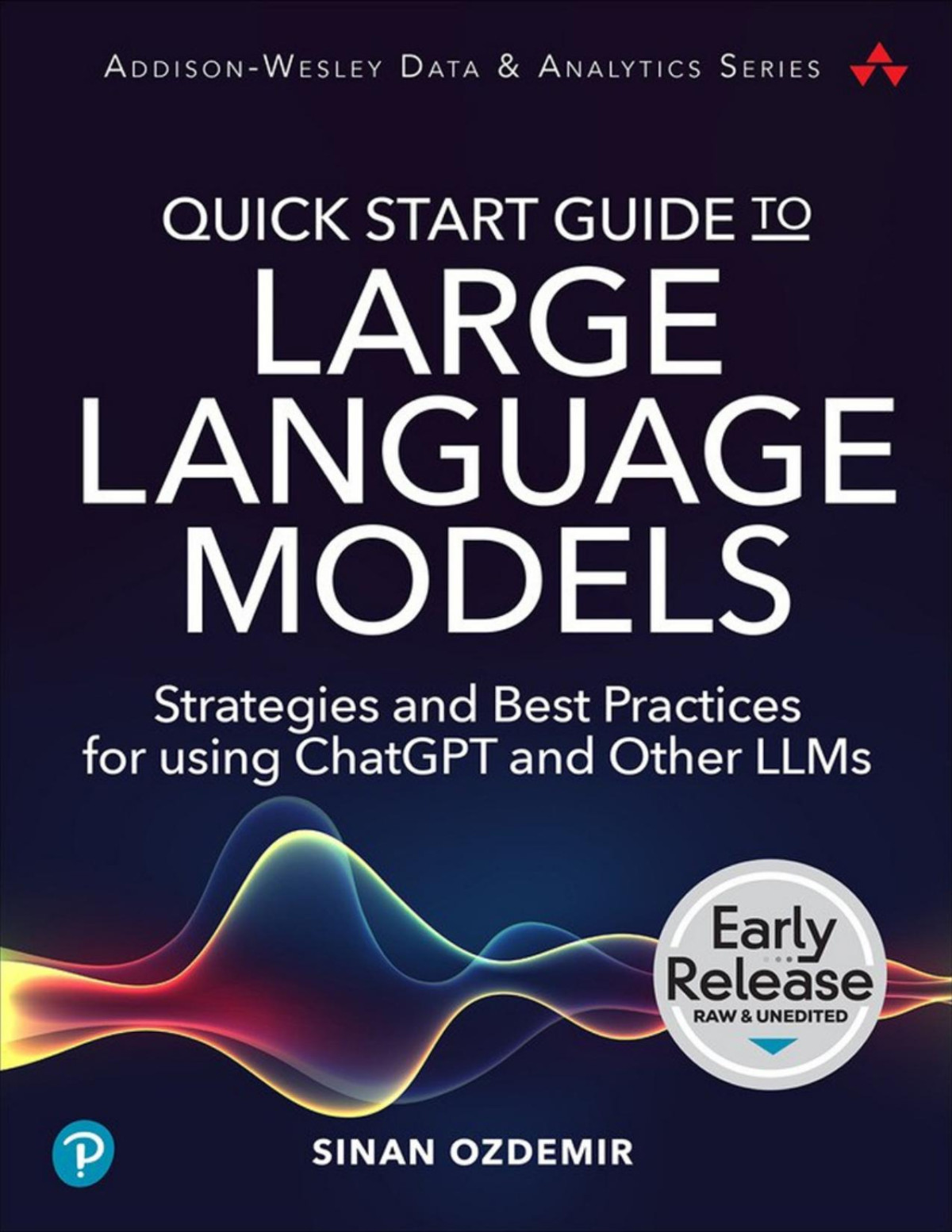
Product details:
ISBN-10 : 0138199302
ISBN-13 : 9780138199302
Author: Sinan Ozdemir
The Practical, Step-by-Step Guide to Using LLMs at Scale in Projects and Products Large Language Models (LLMs) like ChatGPT are demonstrating breathtaking capabilities, but their size and complexity have deterred many practitioners from applying them. In Quick Start Guide to Large Language Models, pioneering data scientist and AI entrepreneur Sinan Ozdemir clears away those obstacles and provides a guide to working with, integrating, and deploying LLMs to solve practical problems. Ozdemir brings together all you need to get started, even if you have no direct experience with LLMs: step-by-step instructions, best practices, real-world case studies, hands-on exercises, and more. Along the way, he shares insights into LLMs’ inner workings to help you optimize model choice, data formats, parameters, and performance. You’ll find even more resources on the companion website, including sample datasets and code for working with open- and closed-source LLMs such as those from OpenAI (GPT-4 and ChatGPT), Google (BERT, T5, and Bard), EleutherAI (GPT-J and GPT-Neo), Cohere (the Command family), and Meta (BART and the LLaMA family). Learn key concepts: pre-training, transfer learning, fine-tuning, attention, embeddings, tokenization, and more Use APIs and Python to fine-tune and customize LLMs for your requirements Build a complete neural/semantic information retrieval system and attach to conversational LLMs for retrieval-augmented generation Master advanced prompt engineering techniques like output structuring, chain-ofthought, and semantic few-shot prompting Customize LLM embeddings to build a complete recommendation engine from scratch with user data Construct and fine-tune multimodal Transformer architectures using opensource LLMs Align LLMs using Reinforcement Learning from Human and AI Feedback (RLHF/RLAIF) Deploy prompts and custom fine-tuned LLMs to the cloud with scalability and evaluation pipelines in mind “By balancing the potential of both open- and closed-source models, Quick Start Guide to Large Language Models stands as a comprehensive guide to understanding and using LLMs, bridging the gap between theoretical concepts and practical application.” –Giada Pistilli, Principal Ethicist at HuggingFace “A refreshing and inspiring resource. Jam-packed with practical guidance and clear explanations that leave you smarter about this incredible new field.” –Pete Huang, author of The Neuron Register your book for convenient access to downloads, updates, and/or corrections as they become available. See inside book for details.
[EARLY RELEASE] Quick Start Guide to Large Language Models: Strategies and Best Practices for using ChatGPT and Other LLMs 1st Table of contents:
Part I: Introduction to Large Language Models
1 Overview of Large Language Models
What Are Large Language Models?
Definition of LLMs
Key Characteristics of LLMs
How LLMs Work
Popular Modern LLMs
BERT
GPT-3 and ChatGPT
T5
Domain-Specific LLMs
Applications of LLMs
Classical NLP Tasks
Free-Text Generation
Information Retrieval/Neural Semantic Search
Chatbots
Summary
2 Semantic Search with LLMs
Introduction
The Task
Asymmetric Semantic Search
Solution Overview
The Components
Text Embedder
Document Chunking
Vector Databases
Pinecone
Open-Source Alternatives
Re-ranking the Retrieved Results
API
Putting It All Together
Performance
The Cost of Closed-Source Components
Summary
3 First Steps with Prompt Engineering
Introduction
Prompt Engineering
Alignment in Language Models
Just Ask
Few-Shot Learning
Output Structuring
Prompting Personas
Working with Prompts Across Models
ChatGPT
Cohere
Open-Source Prompt Engineering
Building a Q/A Bot with ChatGPT
Summary
Part II: Getting the Most Out of LLMs
4 Optimizing LLMs with Customized Fine-Tuning
Introduction
Transfer Learning and Fine-Tuning: A Primer
The Fine-Tuning Process Explained
Closed-Source Pre-trained Models as a Foundation
A Look at the OpenAI Fine-Tuning API
The GPT-3 Fine-Tuning API
Case Study: Amazon Review Sentiment Classification
Guidelines and Best Practices for Data
Preparing Custom Examples with the OpenAI CLI
Setting Up the OpenAI CLI
Hyperparameter Selection and Optimization
Our First Fine-Tuned LLM
Evaluating Fine-Tuned Models with Quantitative Metrics
Qualitative Evaluation Techniques
Integrating Fine-Tuned GPT-3 Models into Applications
Case Study: Amazon Review Category Classification
Summary
5 Advanced Prompt Engineering
Introduction
Prompt Injection Attacks
Input/Output Validation
Example: Using NLI to Build Validation Pipelines
Batch Prompting
Prompt Chaining
Chaining as a Defense Against Prompt Injection
Chaining to Prevent Prompt Stuffing
Example: Chaining for Safety Using Multimodal LLMs
Chain-of-Thought Prompting
Example: Basic Arithmetic
Revisiting Few-Shot Learning
Example: Grade-School Arithmetic with LLMs
Testing and Iterative Prompt Development
Summary
6 Customizing Embeddings and Model Architectures
Introduction
Case Study: Building a Recommendation System
Setting Up the Problem and the Data
Defining the Problem of Recommendation
A 10,000-Foot View of Our Recommendation System
Generating a Custom Description Field to Compare Items
Setting a Baseline with Foundation Embedders
Preparing Our Fine-Tuning Data
Fine-Tuning Open-Source Embedders Using Sentence Transformers
Summary of Results
Summary
Part III: Advanced LLM Usage
7 Moving Beyond Foundation Models
Introduction
Case Study: Visual Q/A
Introduction to Our Models: The Vision Transformer, GPT-2, and DistilBERT
Hidden States Projection and Fusion
Cross-Attention: What Is It, and Why Is It Critical?
Our Custom Multimodal Model
Our Data: Visual QA
The VQA Training Loop
Summary of Results
Case Study: Reinforcement Learning from Feedback
Our Model: FLAN-T5
Our Reward Model: Sentiment and Grammar Correctness
Transformer Reinforcement Learning
The RLF Training Loop
Summary of Results
Summary
8 Advanced Open-Source LLM Fine-Tuning
Introduction
Example: Anime Genre Multilabel Classification with BERT
Using the Jaccard Score to Measure Performance for Multilabel Genre Prediction of Anime Titles
A Simple Fine-Tuning Loop
General Tips for Fine-Tuning Open-Source LLMs
Summary of Results
Example: LaTeX Generation with GPT2
Prompt Engineering for Open-Source Models
Summary of Results
Sinan’s Attempt at Wise Yet Engaging Responses: SAWYER
Step 1: Supervised Instruction Fine-Tuning
Step 2: Reward Model Training
Step 3: Reinforcement Learning from (Estimated) Human Feedback
Summary of Results
The Ever-Changing World of Fine-Tuning
Summary
9 Moving LLMs into Production
Introduction
Deploying Closed-Source LLMs to Production
Cost Projections
API Key Management
Deploying Open-Source LLMs to Production
Preparing a Model for Inference
Interoperability
Quantization
Pruning
Knowledge Distillation
Cost Projections with LLMs
Pushing to Hugging Face
Summary
Your Contributions Matter
Keep Going!
Part IV: Appendices
A LLM FAQs
B LLM Glossary
C LLM Application Archetypes
People also search for [EARLY RELEASE] Quick Start Guide to Large Language Models: Strategies and Best Practices for using ChatGPT and Other LLMs 1st:
quick start guide to large language models second edition
quick start guide to large language models github
quick start guide to large language models by sinan ozdemir
quick start guide to large language models 2nd edition
quick start guide to large language models epub
Tags: Quick Start, Large Language, Strategies, Best Practices, Other LLMs, Sinan Ozdemir
You may also like…
Computers - Applications & Software
Computers - Organization and Data Processing
Computers - Organization and Data Processing
Computers - Artificial Intelligence (AI)
Computers - Artificial Intelligence (AI)
Computers - Artificial Intelligence (AI)
Computers - Artificial Intelligence (AI)



